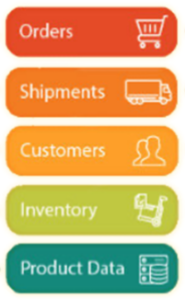October 27, 2020
Over the past decade, the apparel and decorating industries have evolved many time- and labor-intensive decorating processes to using new technologies to deliver products quickly.
Direct to garment (DTG) printing has emerged to print large orders, while also handling small jobs efficiently. But faster turnaround times driven by market demand and e-commerce platforms have created further challenges, requiring decorators to find technology solutions that help businesses provide a competitive edge while remaining profitable.
Using an ERP Solution

- If your company is committed to DTG printing, you should ensure that maintaining efficiency, profitability and quality are at the forefront of every step in your business processes. Here are some best practices for ERP solutions to help instill success in your fulfillment processes and to help you create an organized future for your business. Integrate with your e-commerce sources to automate and streamline order entry. With the industry uptick of customers’ buying habits changing to buy from e-commerce sites, it is important to have an order-import process. Sharing data seamlessly between these e-commerce sites and your ERP solution streamlines and simplifies the that process, making manual orders unnecessary.
- Automate your production steps. With orders created electronically and queued for production, each job is set up through an automated process. This enables jobs to get started as soon as the machine is available and at a lower cost with reduced manual steps and employee handling. Streamlining orders enables a better understanding of machine capacity to allow jobs to shift at times of higher demand.
- An ERP solution provides visibility into on-hand inventory and allows for a quick turnaround for printing jobs. Communication provides information of inventory levels with a buffer to protect stock levels.
- Use barcodes to track garments by creating and placing a barcode label on each garment when the item is picked. This allows for each operational step of the process to be scanned to provide real-time access to order information. Barcode data provides integrated information that is sent from the ERP solution to the DTG printer, which adds each order to the queue and evaluates the efficiency of each machine.
- Complete the needed finishing steps prior to shipping. The customer should provide any requirements like folding or tagging during the ordering process to make sure that the final output matches their needs. Also, the e-commerce site needs to maintain communication with the ERP solution to have all the information throughout the work flow process.
- Use shipping integrations to update marketplaces and streamline fulfillment. The last step in the order-fulfillment process is taking care of any specific shipping instructions. This includes when, how and where to ship the item. With shipping integrations in the ERP solution, addresses can be verified, shipping labels can be produced and tracking information can be sent to the marketplace and customer.
As a DTG-printing business seeking profitability in a competitive marketplace, embracing an ERP solution will help you meet customers’ on-demand printing needs.
